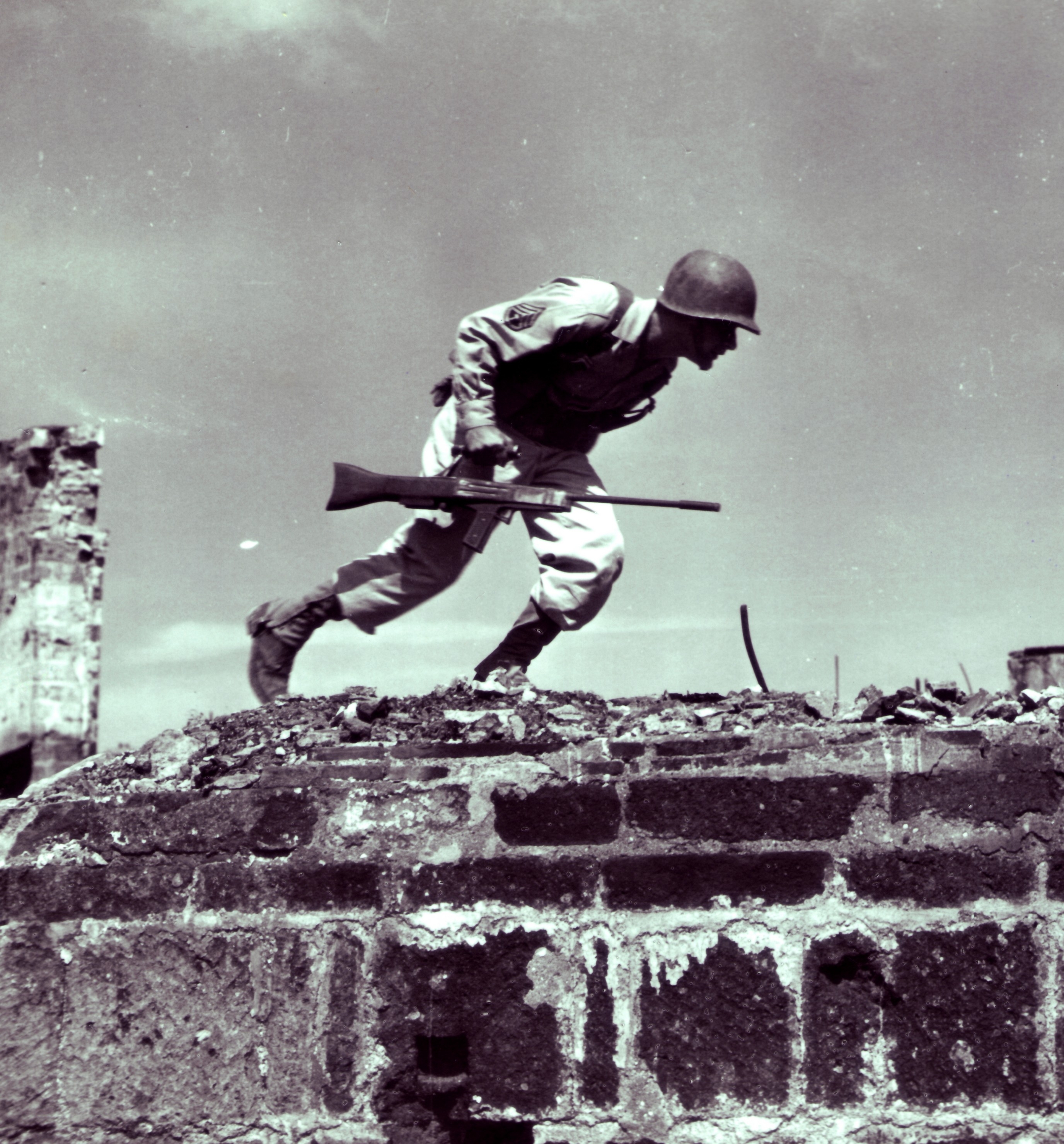This revolver is coming up for auction at Rock Island here.
John Henry Fitzgerald was not the first person to cut down a revolver barrel, nor the first person to bob the trigger guard or hammer. But he was the person who put all these modifications together as a package and popularized it as a self-defense piece. “Fitz” was a former NYPD police officer, very successful competitive and exhibition shooter, and a gunsmith and representative of the Colt company from 1918 until 1944. He made somewhere between 20 and 100 Fitz Specials as part of the Colt custom shop, and inspired many more to be made by other gunsmiths.
The Idea was to have a gun that would carry easily, and not get hung up on clothing. The shortened barrel, bobbed trigger guard, bobbed hammer, and bobbed ejector rod all served this purpose, with the trigger guard removal also easing use of the gun with gloves on. With the exception of the trigger guard, all of these ideas have become commonly accepted and available on revolvers designed for concealed carry. The trigger guard, of course, is a bridge too far in today’s more litigious and safety-minded society…




I bought any number of old Colts (Army Specials, Official Police, etc.) swearing that I would Fitz them, but I could never bring myself to do it. I would like to point out that they were all beaters with no collector value, before the hisses of horror begin.
“The trigger guard, of course, is a bridge too far in today’s more litigious and safety-minded society”
Why was only front part of guard removed rather than whole?
Presumably so that nothing could get behind the trigger and potentially interfere with the action of firing?
If you are pulling the gun out of a pocket (rather than holster) the smooth, rounded rear part of the guard is highly unlikely to catch on the pocket rim or anything in the pocket, including the pocket lining. Without any guard, the end of the trigger is very likely to catch on something when rapidly being pulled out.
ln fact, a revolver of this made shines well, slips through the hand, shoots high and catches clothes in the pocket. Seems designed as if for exhibition purpose rather than serious gun fighting. lMHO.
Given Fitzgerald’s bona fides I think I will go with his judgment. I have handled a S&W Model 10 modified in this way. Catching clothes was not a problem. Practice holding low solves shooting high. Slips through the hand? Remember 6 lemodified go into the cylinder. Not six slugs of bourbon in your belly. Funny how that makes a weapon easier to handle, innit?
Thanks for explanation, I unconsciously assumed revolver is weapon carried in holster, hence my confusion.
I was aware of automatic pistols with folding triggers, which lacked guard totally for example:
http://www.vhu.cz/exhibit/pistole-fox-v-razi-765-mm-browning/
Though I failed to connect fact that trigger when folded give them stream-line, and trigger is not foldable in Fitz.
There were also many revolvers intended for pocket carry with folding triggers and no trigger guard. But this was more common in Europe than America.
Interestingly Regio Esercito was equipped with folding-trigger revolvers, namely Bodeo (not all examples):
https://en.wikipedia.org/wiki/Bodeo_Model_1889
It is unknown for me why they decided to use such solution, but it apparently worked well for them, as Bodeo was still used during Great War and in inter-war period.
To prevent the trigger working in double action mode accidentaly.
Correction; This is for Daweo’s question.
The biggest problem with the cutaway trigger guard is that if the revolver hits something hard (say when the owner has to dive for the pavement because he’s being shot at) the weakened guard can bend, jamming the trigger in the forward position.
A “semi-Fitz” modification was to grind away one side of the front of the trigger guard to the center line, right side for right-handers, left side for southpaws. The idea was to let the trigger finger slip past the narrowed guard to engage the trigger face more quickly during the draw, while still retaining most of the structural strength of the trigger guard “bow”.
I have shot DA revolvers both with and without this modification, and I can truthfully say it has no effect on the speed of my first shot, either way. I guess I’m not used to the nuances of the idea or something.
Or maybe the money people spent on such modifications to their revolvers was the same amount as the money I spent on practice ammunition.
cheers
eon
“I have shot DA revolvers both with and without this modification, and I can truthfully say it has no effect on the speed of my first shot, either way. I guess I’m not used to the nuances of the idea or something.”
This would explain why such solution was never implemented in production DA revolver (or I am just unaware of such model?), unlike short barrel.
–
Interestingly, Russian answer to revolver easy to care is much different, see revolver named R-92
https://modernfirearms.net/en/handguns/double-action-revolvers/russia-double-action-revolvers/r-92-eng/
which has specific look due to cylinder being more aft than other revolvers and partially shrouded hammer (that is why it might looks like hammerless at first glance)
Cartridge used in R-92 might look peculiar for revolver usage at first glance: 9×18 Makarov and 9×17 Kurz [.380 Auto], mutually exclusive (R-92 for Makarov is not for Kurz and R-92 for Kurz is not for Makarov). Why they use them? Because no proper revolver cartridge was available in 1990s Russia, target revolvers – namely TOZ 36 and TOZ 49 existed, but cartridge for them were as you might guess typically target, so other cartridges were used in R-92: 9×18 Makarov and 9×17 Kurz, second one because in Russia exist certain border below which cartridge are available for security agencies, Kurz is there, Makarov not.
Ed McGivern was active that same era and he did not cut away triggergaurds, and thought it was not needed in “Fast and Fancy Shooting” if I remember correctly. However, he did elongate some trigger guards which would give more access to the trigger while still protecting it. Ed was an amazing revolver shooter, possibly the best ever.
In short, it seems to have been a fad that only some shooters at the time went for.
Has anyone tried how easy or hard it is to bend a trigger guard by it striking say pavement? It strikes me that it needs a lot of force applied at just the right point. In short if an individual had large hands like Fitz did, the modification might solve his manual access problem with little risk of the accident in question ever occurring
Supposedly, ‘Fitz’ carried two of these in his front trouser-pockets.
In ‘Shooting to Live with the One Hand Gun’ Fairbairn gives these ‘Harlem Howitzers’ an endorsement too. Offhand, I think his example was a 1917 Colt cut down.
Minus the 1/2 trigger guard, even today that revolver in 44-40 would be a formidable sidearm.
So it’s basically a case of “In goes the hot lead, out go the guts!” Either that or “Say hello to my little friend!”
I have seen and handled a “Fitz special” that was owned by a woman who served in the Air Force (IIRC) during WW2.
It was a Colt in .38 Special and a beautiful example of the gunsmith’s art.
That woman was in her 60’s at the time and she could make that little pistol sing a tune.
Fitz did quite a bit of work as an instructor during the war years and there are pictures ( And perhaps videos) of him teaching female service members how to shoot.
There used to be a fashion down along the border (Texas, etc.) to do a similar Fitz job on 1911s. As in, remove the trigger guard entirely, giving the Colt automatic effectively a “sheath” trigger like a “Mexican Model” S&W Model 1 1/2 through Model 3 topbreak single-action.
Note that down there, they tended to use the “Mexican Carry”, Condition Two, hammer down on a loaded chamber, thumb-cock on the way up like a Colt Peacemaker, and thus ignore the thumb safety entirely.
I suppose it was about as safe that way as any single-action revolver carried hammer down on an empty chamber. Still, seeing one shoved in a Ranger’s belt like that was a bit disconcerting at times.
cheers
eon
After colt introduced the firing pin safety with the series 80 1911…
the safety of the 1911 was approaching that of say a post wwii and pre corporate asset stripping, Colt or S&W revolver.
For an excellent discussion of the safety and in some cases (eg Remington Walker trigger) hideous lack of safety
– By design
Check out Jack Belk’s book, “unsafe by design”
The book is available in dead tree form from the likes of Amazon
And as a free download from Jack Belk’s academia.edu page.
https://www.academia.edu/9677098/UnSafe_by_Design_Forensic_Gunsmithing_and_Firearms_Accident_Investigations
“giving the Colt automatic effectively a “sheath” trigger”
So it ended looking similar to Jo-Lo-Ar (minus palanca)?
http://www.9mmlargo.com/joloar/
(which itself was derived from Sharp-Shooter automatic pistol, which have normal trigger guard, see photo near end)
Famous Texas Ranger Manuel “Lone Wolf” Gonzaullas had a pair of 1911s he customized to his personal preferences, including completely removing the trigger guards.
Of course, just because he could get away with it doesn’tmean anyone else could.
Just by the name, it was assumed to be made in honor of the late President JFK SR’s late grandfather John Francis Fitzgerald, the Boston Mayor.
One item for discussion:
It would seem to me that when the “eel’s hips” Fitz specials were in a sort of vogue that police revolver use was almost wholly one-hand, single action shooting. Double-action shooting was often a purely defensive, immediate response to an ambush to get off a “suppressive shot” from the hip, before reverting to single-action mode, yes?
What I mean, is that proper use of the double-action at speed was developed concurrently to oddities like the Fitz modifications. Nowadays, the few people who still use revolvers do so typically all double-action all the time and at speed.
Were there any examples of revolvers with quick change cylinders to address the low ‘magazine’ capacity and slow loading issues associated with revolvers? Or is that the sort of thing you would only see in Hollywood?
The main reason to bob a trigger guard is to facilitate its operation with gloves on, not to make you a faster shooter. Fitz was a NYPD cop. When you’re out on the beat in the middle of winter with your top coat and gloves on, a bobbed trigger does help.